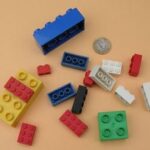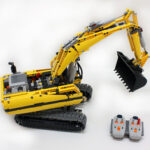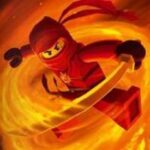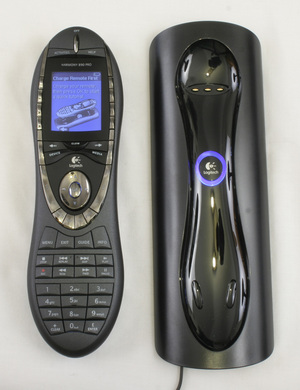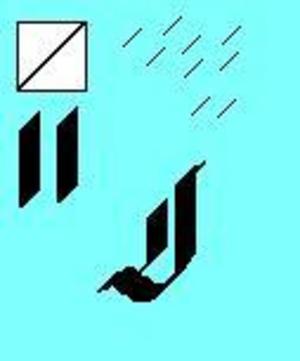Whether you are a homeschooler or the parent of a mainstream educated child, you can use architecture themed building kits and toys to help with history, motor skills, building principals and geography. Lego is one of the leaders in large scale architecture building systems; one of the biggest perks to investing in them is that they can use incorporated with other Lego sets and bulk packs to create new or modified scenes. There are a lot of companies that make specialty building systems and kits, some of them are better than others in regards to price and replay value. Age recommendations are just that, a suggestion. If your child has building experience they might be able to tackle some of the more advanced systems.
ArchiQuest Building System: Priced at about seventy dollars, this kits are made up of wood blocks that have printed images on them. There are endless ways to arrange them to make different types of structures in different sizes. The beauty of the system is that you can keep adding to it to make larger scenes and structures. This system was something that my boys loved and spend hours using. From it their love of Lego blossomed but the ArchiQuest system is not interlocking so it requires more planning when doing something with five or six levels. This is something that kids of all ages can use and it is something that can grow with them. In addition to the medieval theme there are also Egyptian and fantasy themed sets that you can get. While they are expensive they are something that will last a long time.
3-D Puzzles: If you have an older child that loves a challenge then 3-D puzzles are worth looking in to. They can be a little hard to get used to since you are not building a traditional flat puzzle but rather something that has sides to it. We have had 3-D puzzles from a couple of different companies like Ravensburger and Puzzle Plex over the years. The ones with an architectural or historic slant to them are based off of real world structures. Some of the most popular 3-D puzzles include Big Ben, Eiffel Tower, Notre Dame, Taj Mahal and Empire State Building. These types of puzzles help kids think in a different way when working on the piece; it can help with broadening their thinking skills as well as thinking in a 3-D format.
Nanoblock Building Systems: Nanoblock uses the same type of building system as Lego; pegged or studded pieces that interlock to form a shape or design. The prices on most of the specialty Nanoblock sets are about half the price of what you would pay for Lego but there is a noticeable difference in the type of plastic used as well as the overall feel of them. From an educational standpoint the structured sets are amazing; The Easter Island set was one of the first sets I purchased and it was something that the boys loved building. Ultimately they took the design and enlarged it using graph paper to expand the size of the statues. Other impressive Nanoblock sets that are excellent for architectural or historical lessons include Himeji Castle, Kinkakuji Temple and Neuschwanstein
GeoMag: Imagine if you could expand basic building and structure concepts to incorporate symmetry, the use of magnets and the ability to build 3-D shapes. If that sounds interesting then the GeoMag system will make your jaw drop. One of the most amazing things that they boys built with the larger and supplement sets was a DNA double helix. While not on a grand scale of those you would see in college labs, it had over 1,800 pieces. GeoMag is made in Switzerand and is an imported item, the systems and sets are not expensive but they can be hard to find in retail stores. There are magnets in the set so they are not recommended for younger children or use near computer equipment.
Lego Architecture: One of the most popular Lego Architecture sets is Fallingwater but I wasn’t all that impressed with the build, especially considering the hundred dollar price tag. The small and mid sized sets include The White House, Sydney Opera House, Seattle’s Space Needle and the Guggenheim Museum. Even though I am a huge fan of Lego there are some architecture sets that are not worth the suggested price. It remains to be seen if they are going to add more sets to the theme in 2012 and 2013 although there have been additions to the website about new models being added in September.
How can these types of toys and building systems benefit children? You can use them to teach history, geography, building concepts, architectural history and art appreciation. For the basic building sets like GeoMag you can work in science with hands on visual learning. Reading about a famous building can be educational but if you give a child the opportunity to build it on a smaller scale they will retain more of what they are learning about and that could lead to them branching out in to other areas. My boys had a deep love of all things Egyptian and were fascinated with how the pyramids were constructed. This lead them to making their own from origami cubes to see which design was the strongest.
If you are considering investing in building sets you are going to want to look for something that can be expanded; this increases the replay value and the things that can be done with it. Some of the systems are not cheap but can you put a price on education?

